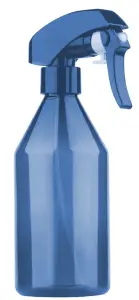
Aluminium and Breast Cancer
In the following excerpt of his recent post, Dr. Christopher Exley, eminent researcher (to the point of gaining the title Mr Aluminum in the industry), builds a scientific case tying breast cancer and aluminum, citing work by other noted researchers.
In my recent book I write about building a case for an aetiological role for aluminium in breast cancer. Herein I will revisit the chapter in my book and examine the case for aluminium anew.
My interest in breast cancer was sparked by the research of oncologist Philippa Darbre linking breast cancer incidence and occurrence with the regular use of antiperspirants. My interest in these ‘cosmetics’ went back much further and I was concerned that antiperspirants were significant contributors to the body burden of aluminium. Please read my book for an account of the history, but to cut a long story short, I collaborated with Darbre and we showed that breast tissue biopsies obtained from women with breast cancer contained aluminium. Of particular interest was that breast tissues closest to the underarm consistently contained a higher content of aluminium. Of course, our research was ignored by the breast cancer community and campaigned against by breast cancer charities, including the charity that provided the breast tissue biopsies used in our study! However, it was followed up by a number of research groups in Europe and the US and evidence began to be put forward to support aluminium as a carcinogen in breast cancer. Perhaps foremost amongst these groups is research led by Stefano Mandriota in Switzerland. Mandriota, an oncologist of some repute, showed that mouse mammary epithelial cells underwent malignant transformations upon exposure to aluminium. Aluminium-induced tumours were the result of genomic instability. The most recent publication from this group highlights the importance of chromosome instability in aluminium’s carcinogenicity. Mandriota’s meticulous cell and animal studies are building the case for a role for aluminium in breast cancer. These studies continue today and deserve our full support.
A role for aluminium in breast cancer is not dependent upon a link to the regular use of antiperspirants. However, the most definitive clinical trial yet to fully investigate such a link makes a very compelling case. The study found both significantly increased concentrations of aluminium in breast tissue in breast cancer and a significant increased risk of breast cancer in women who used an antiperspirant several times a day. Confirmation of increased content of aluminium in breast tissue in breast cancer asks the question at least as to the role played by aluminium-based antiperspirants in the accumulation of aluminium in breast tissue. Note that contrary to the information repeatedly reported by the antiperspirant industry these ‘cosmetics’ do not prevent sweating by simply acting as plugs in the sweat gland. These ‘cosmetics’ prevent sweating by inhibition of the activity of the sweat gland by aluminium. The industry is well aware of this but cannot admit to such since this would change the categorisation of antiperspirants from simple cosmetics to a medicine. The latter requiring authorisation through clinical trials demonstrating both safety and efficacy. (Well, this used to be the case prior to covid vaccines.) Since sweating is a significant route of excretion of aluminium from the body, inhibiting sweating in the underarm region is likely to promote accumulation of aluminium in the surrounding tissue.
The industry actively ignores the science and attempts to defend itself by funding studies that desperately look to minimise the role of antiperspirants in the accumulation of aluminium in breast tissue. Let me be frank about such published work. I do not believe them. They set out to prove a point and, hey presto, the results prove their point. The recent study I have highlighted is wholly funded by the antiperspirant industry, its interpretation is wholly dependent upon the premise that antiperspirants are simply acting as plugs in sweat glands and as a clue to its bias one can notice that it only cites industry publications and completely ignores all previous independent research in this field. One can only surmise that the journal editor and manuscript referees are either stupid or, perhaps more likely, industry affiliates.
I have built a case for a role for aluminium in breast cancer and I will continue to watch with interest the new and independent research that tests this role. …
PS Here is the latest paper by Stefano Mandriota on the important question of the carcinogenicity of aluminium.
The full article can be read here.




 Fiji Water is a mineral water that is naturally high in silicic acid. Just buy it at your store or order it on line. Fill a fine mist sprayer with Fiji water and mist the affected area several times a day or several times an hour if you want.
Fiji Water is a mineral water that is naturally high in silicic acid. Just buy it at your store or order it on line. Fill a fine mist sprayer with Fiji water and mist the affected area several times a day or several times an hour if you want.